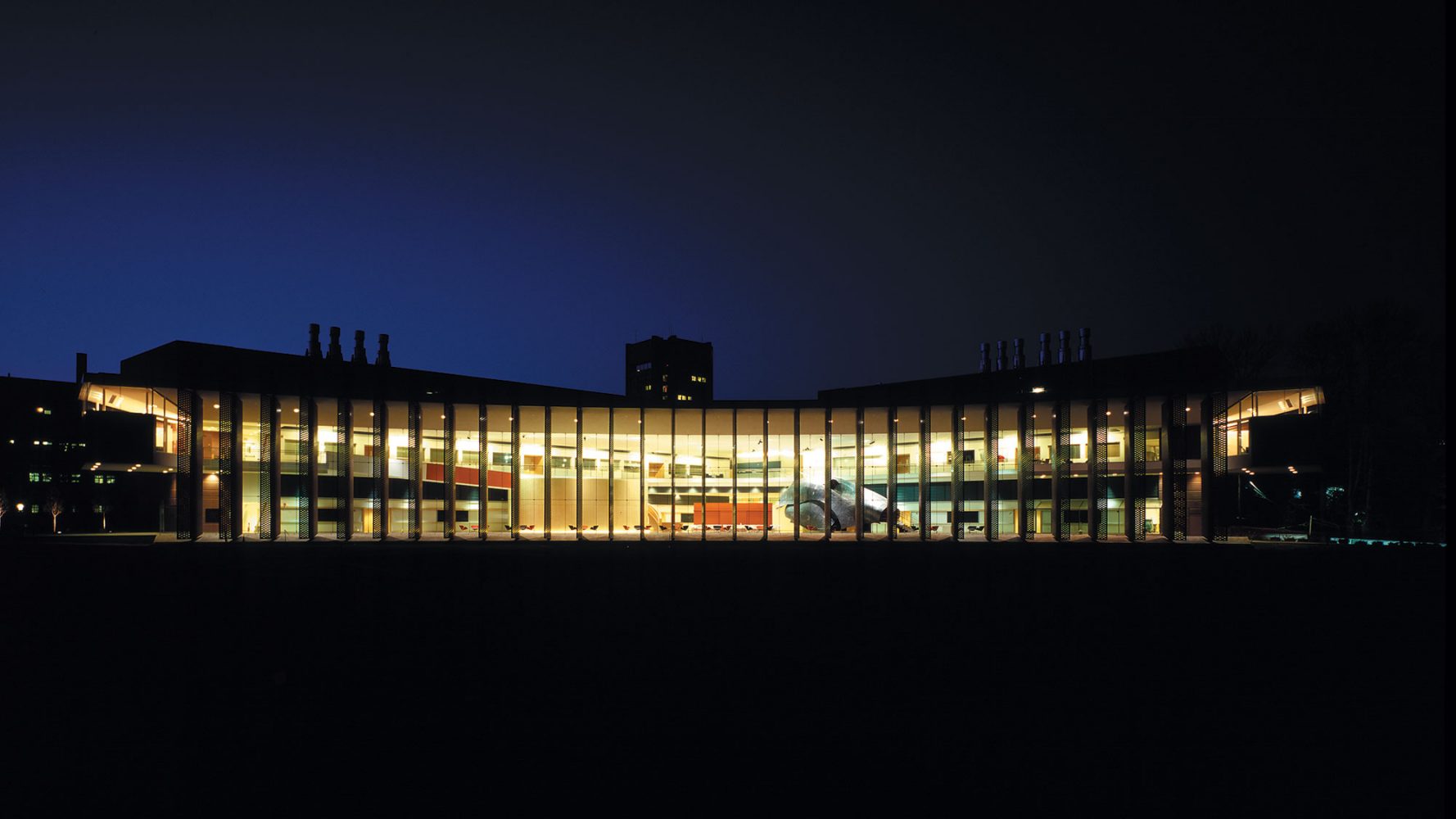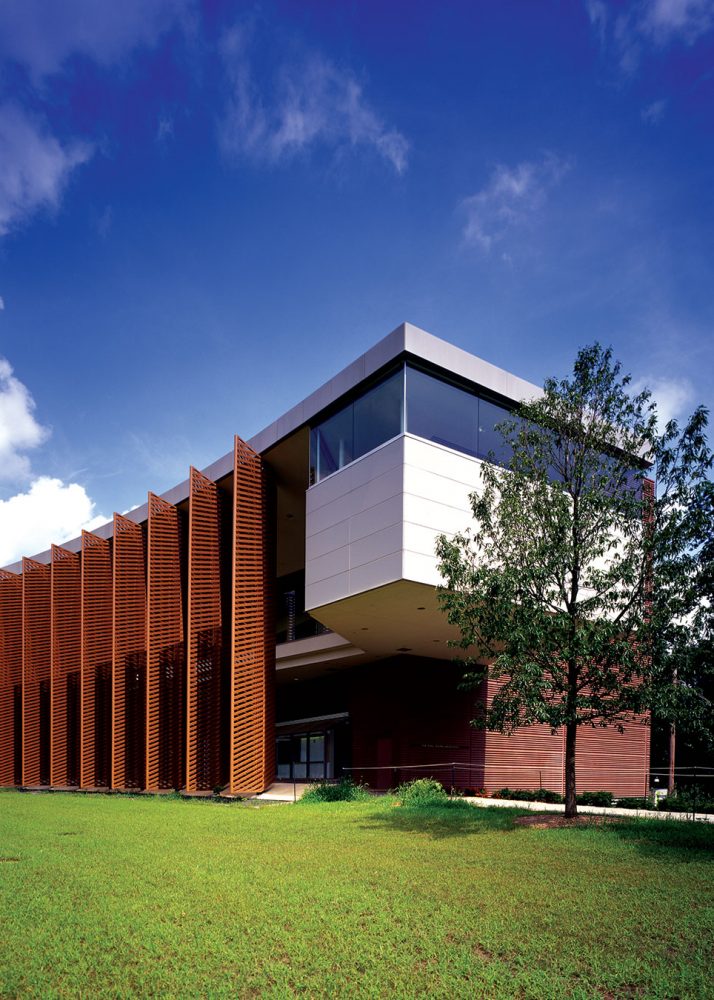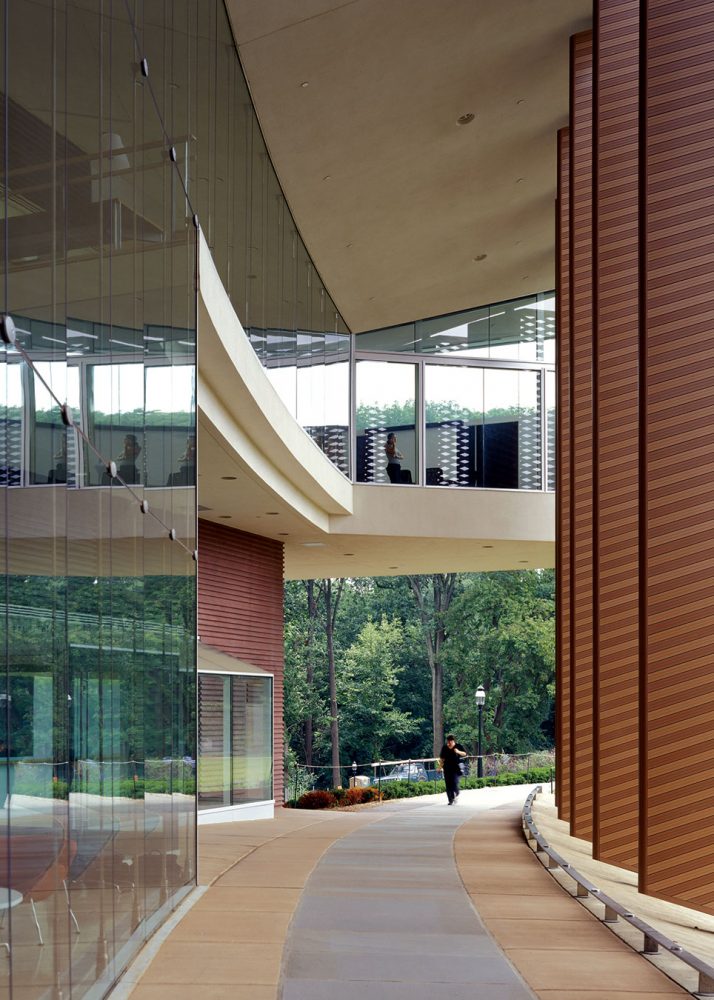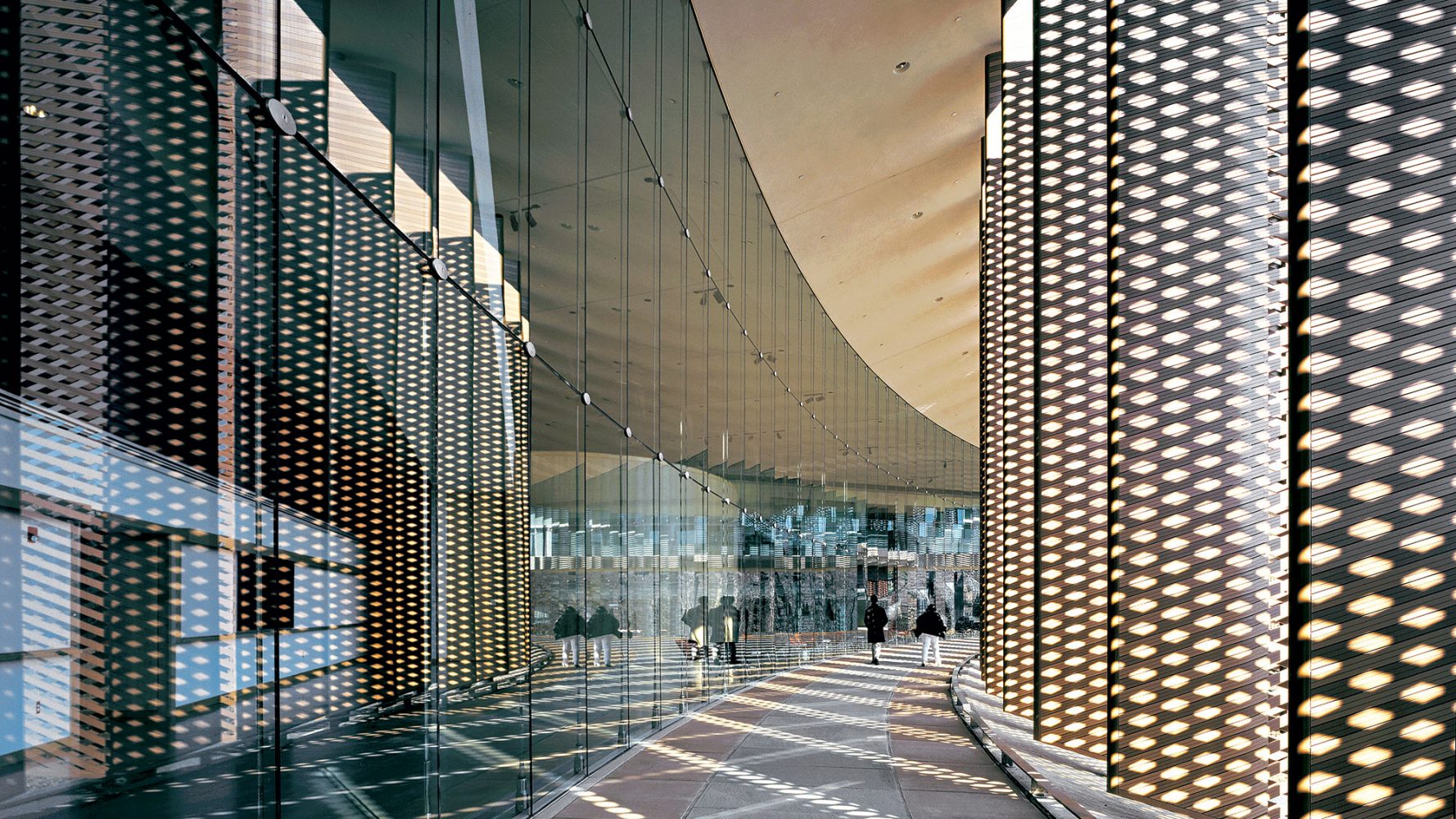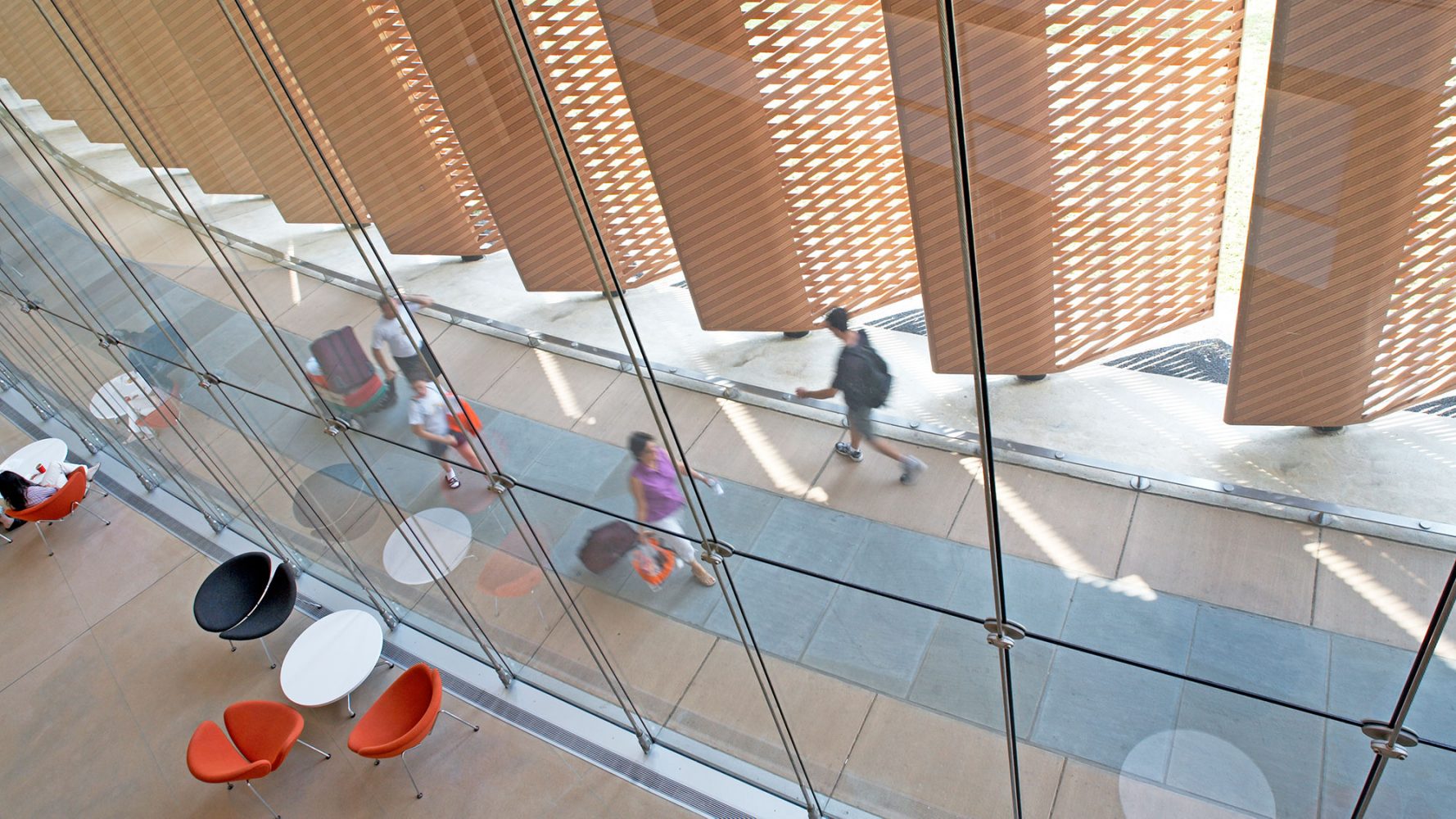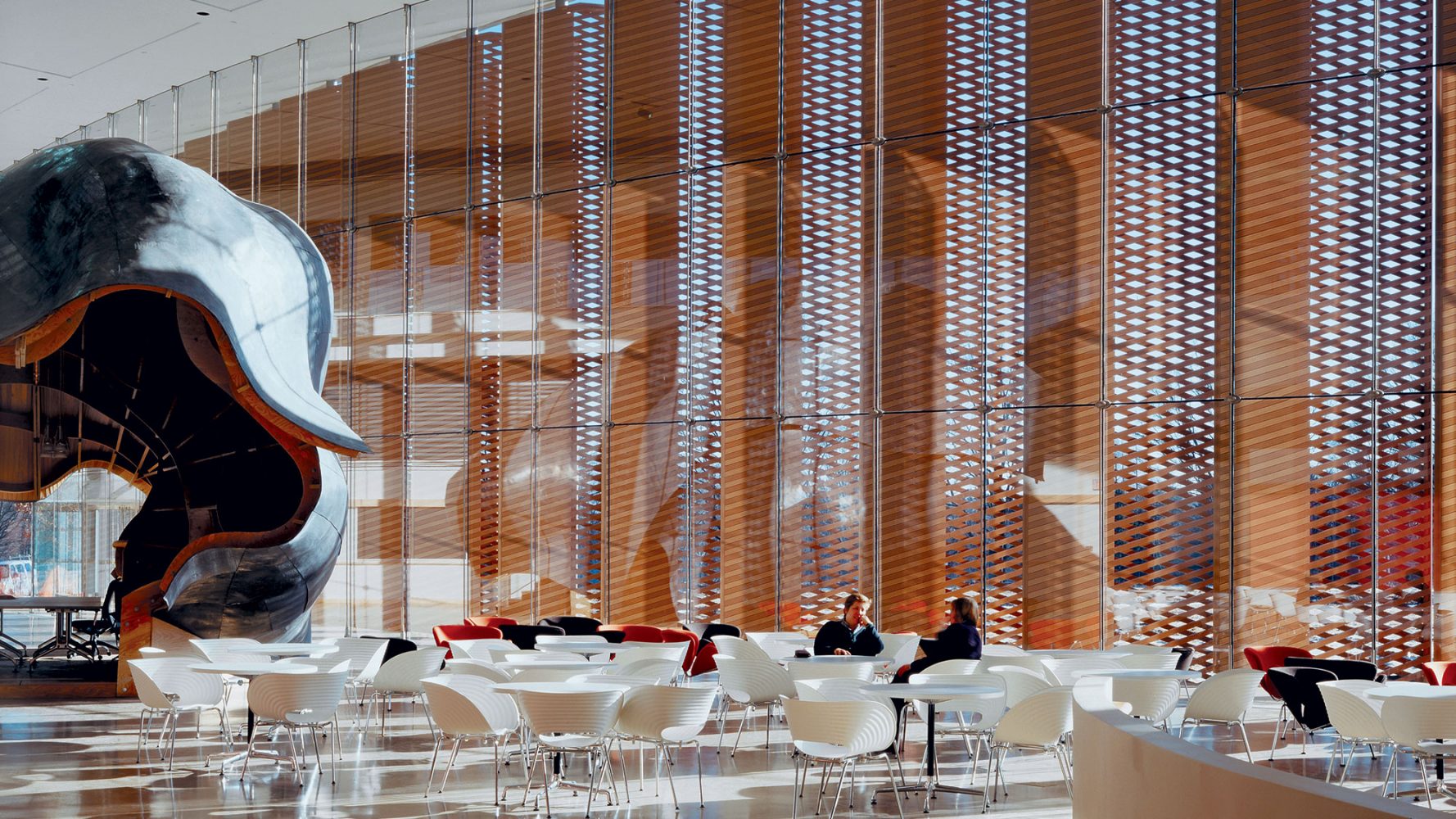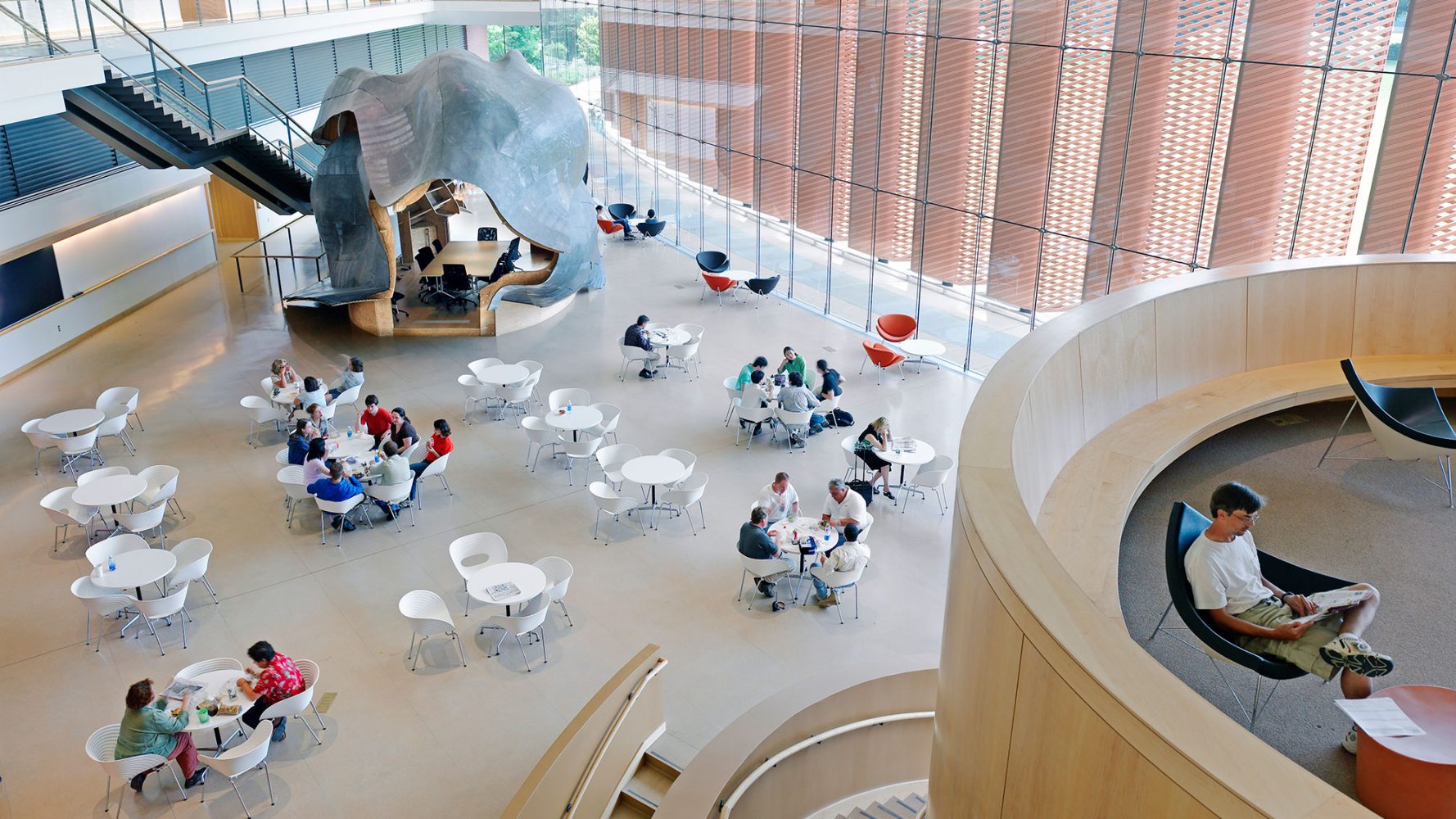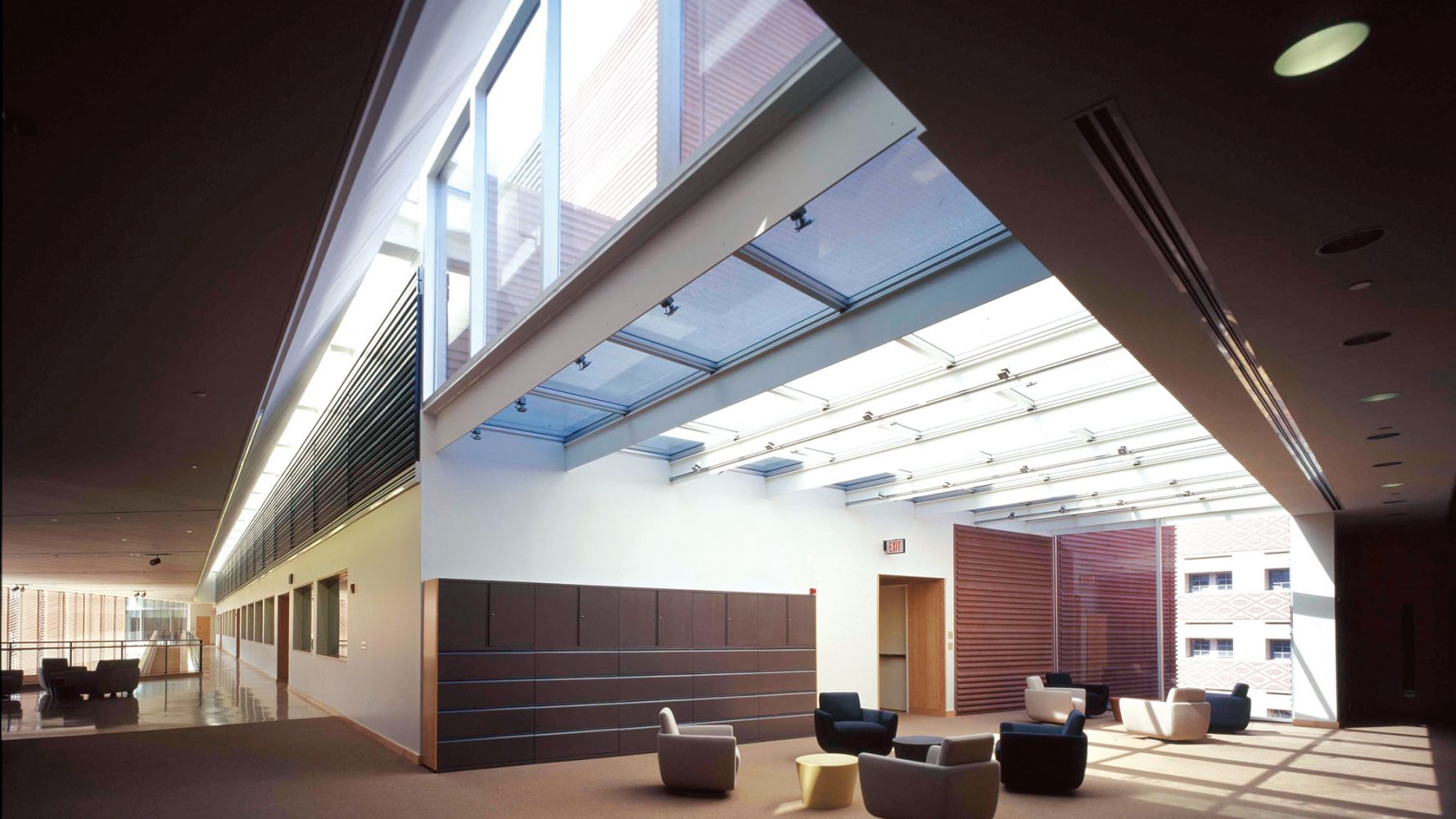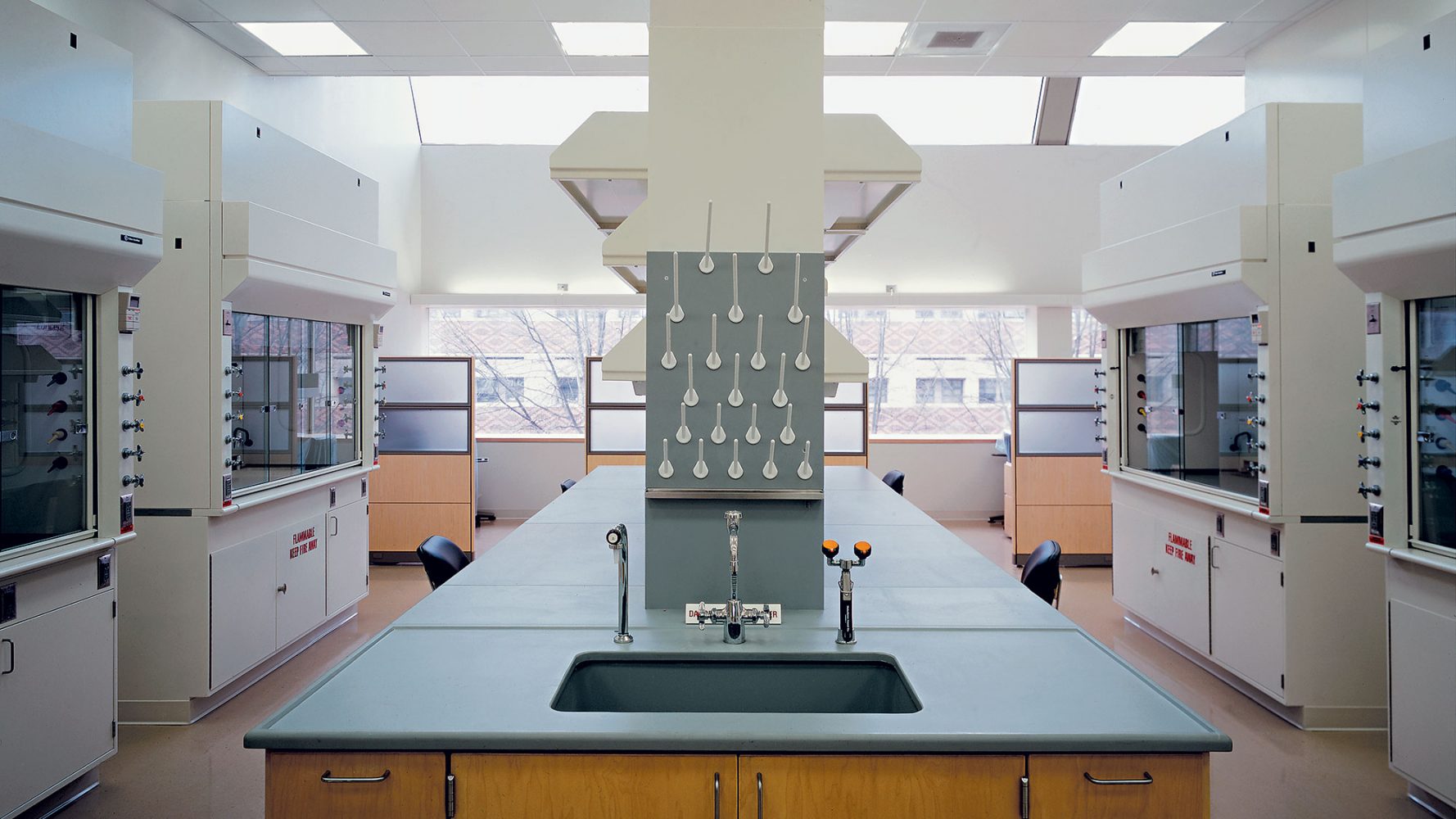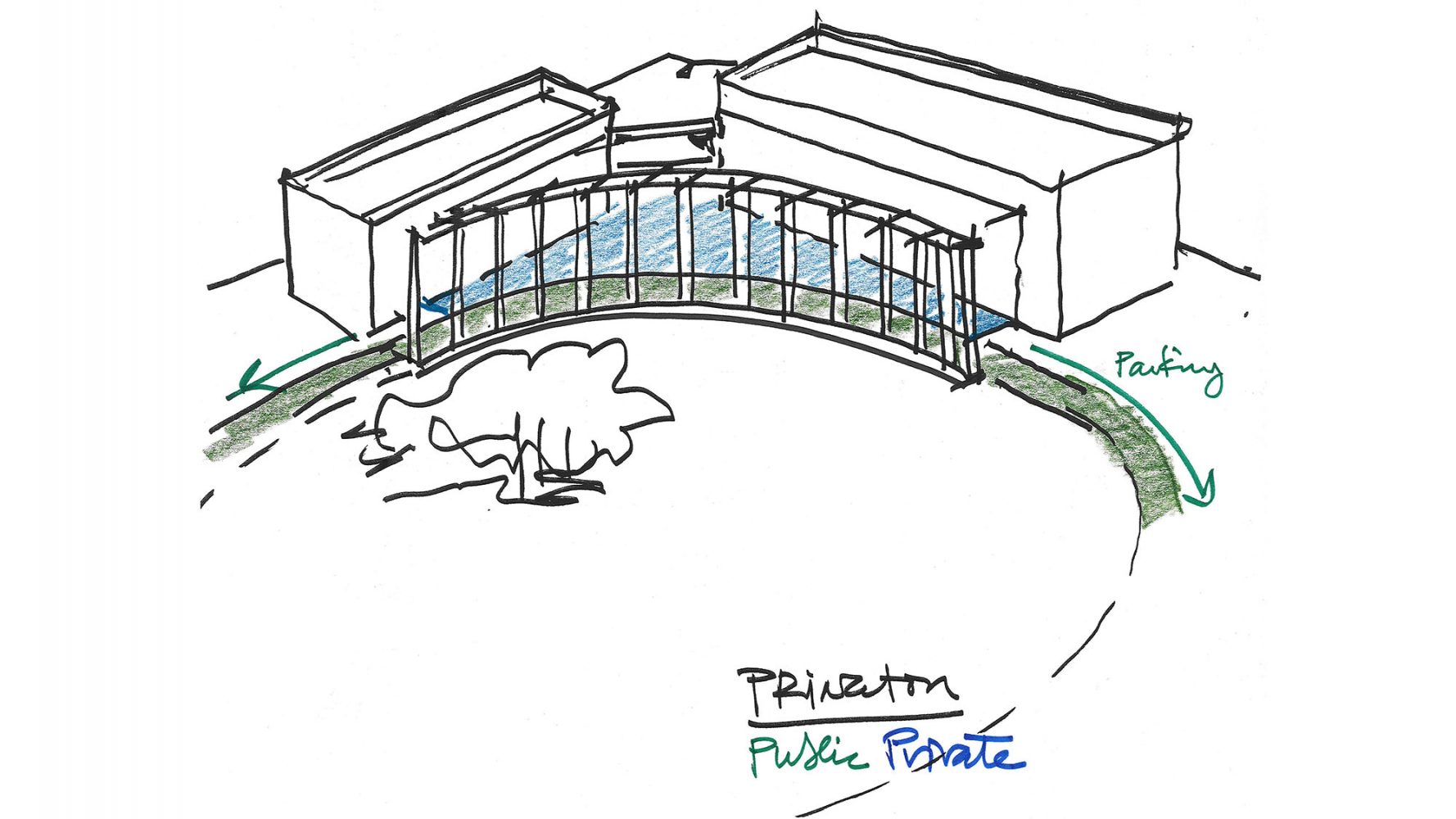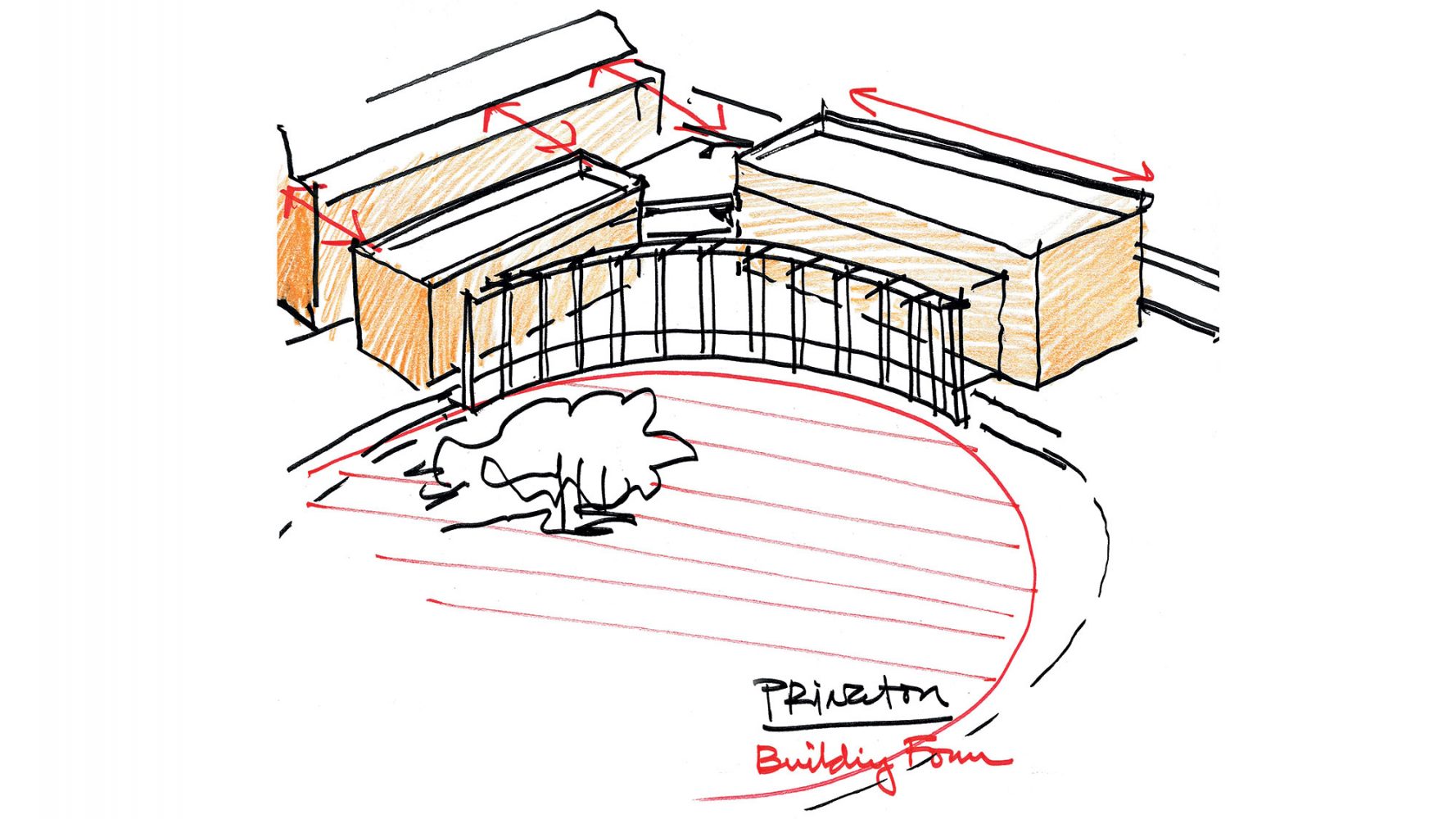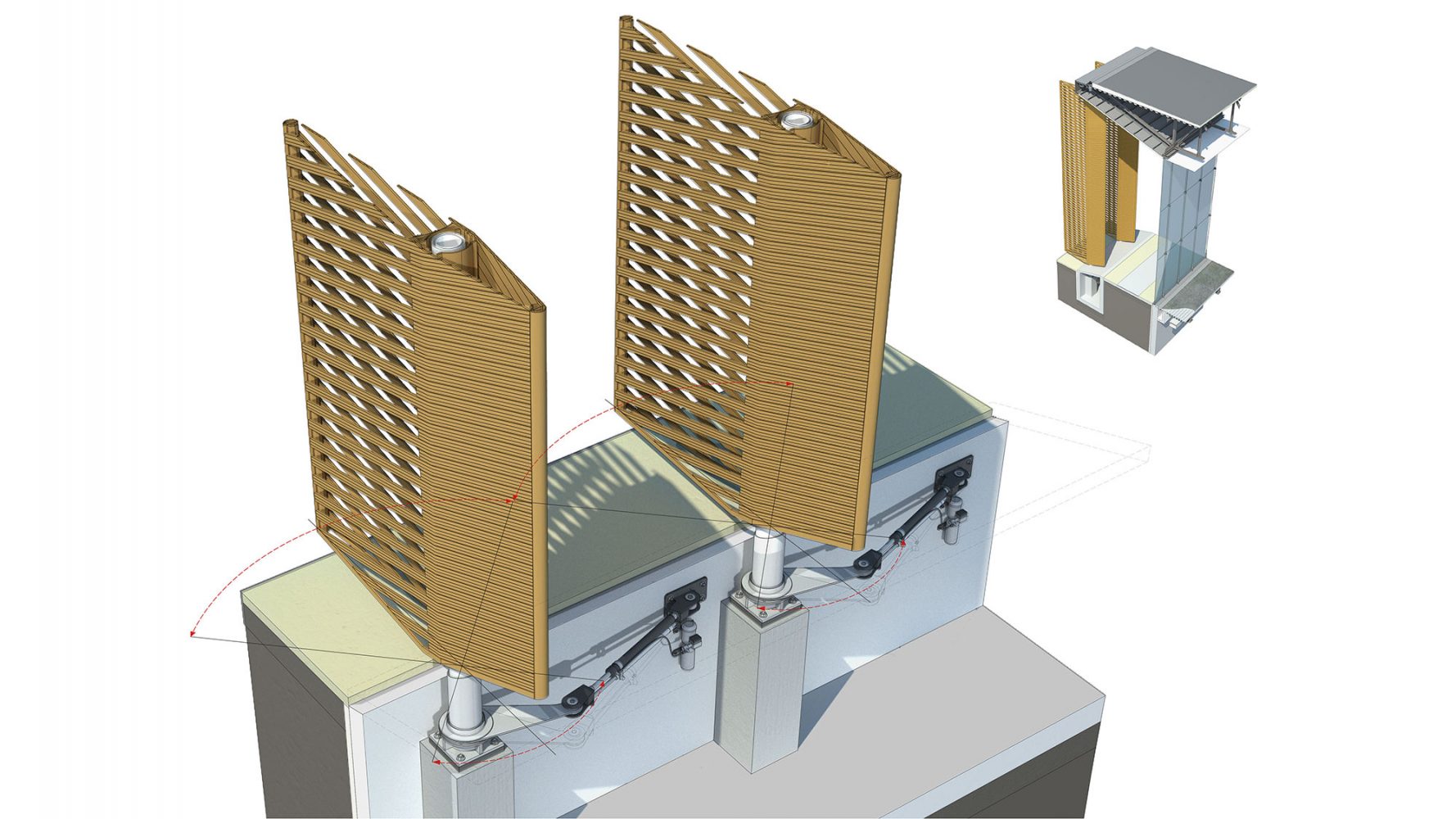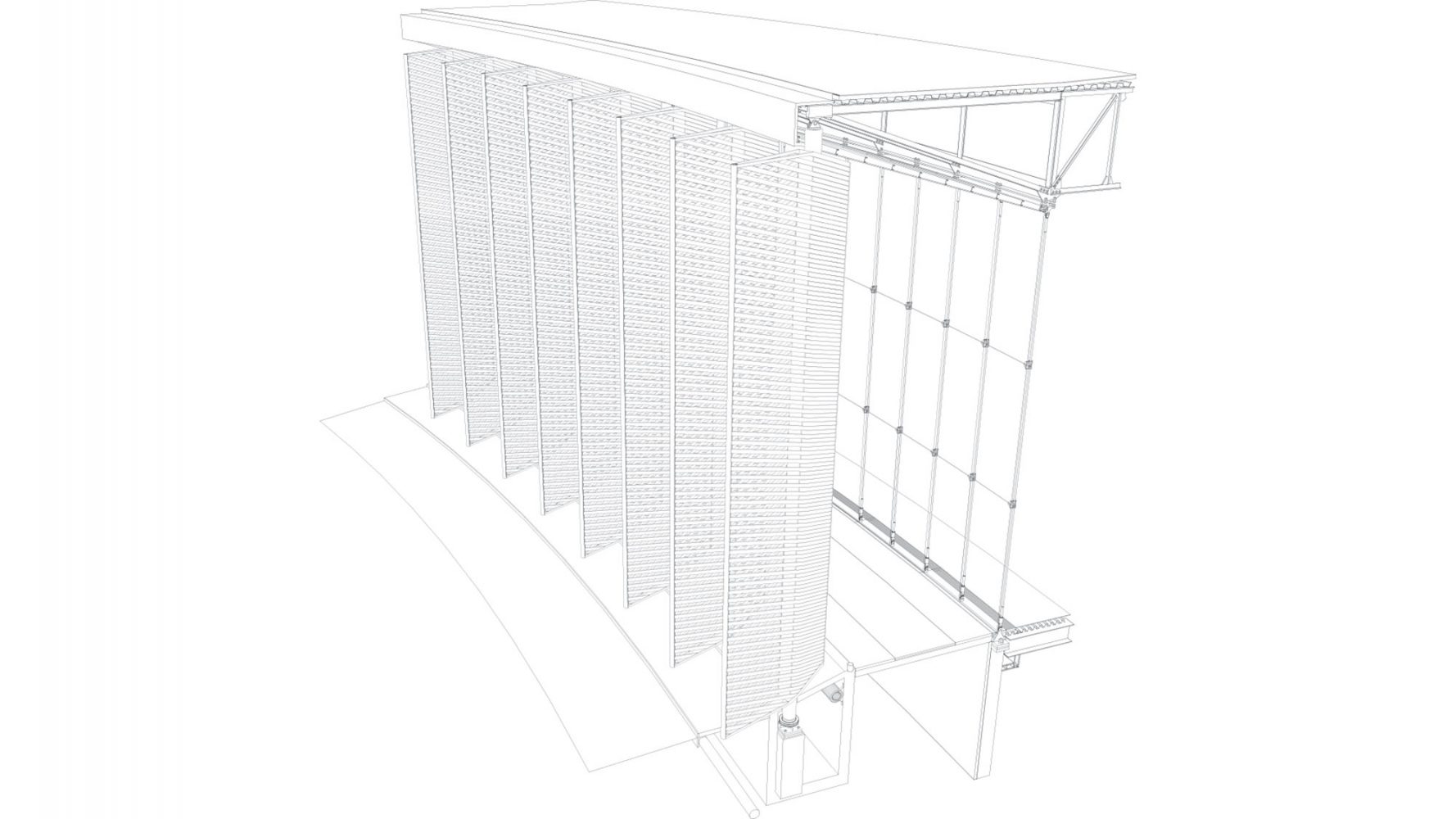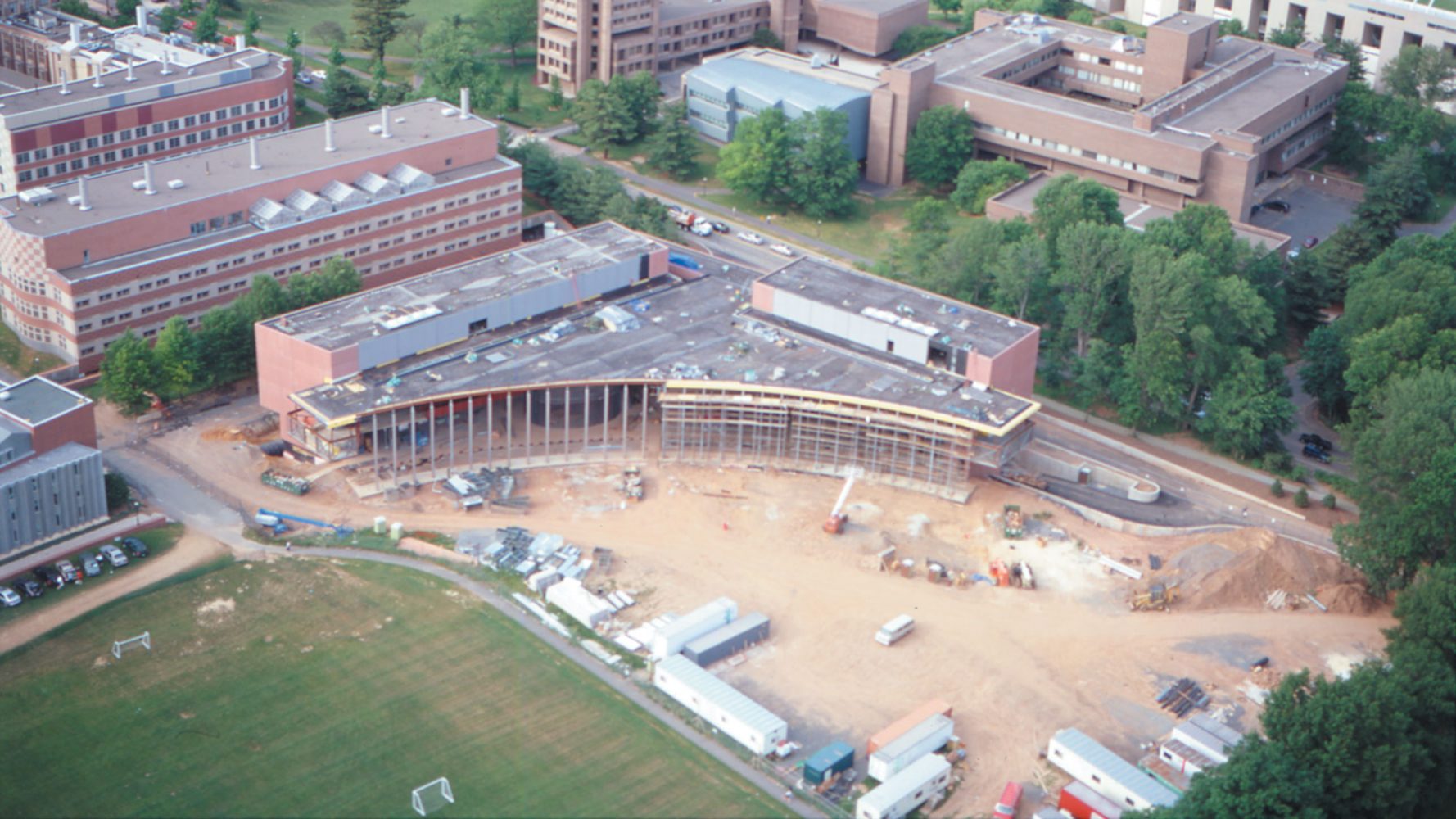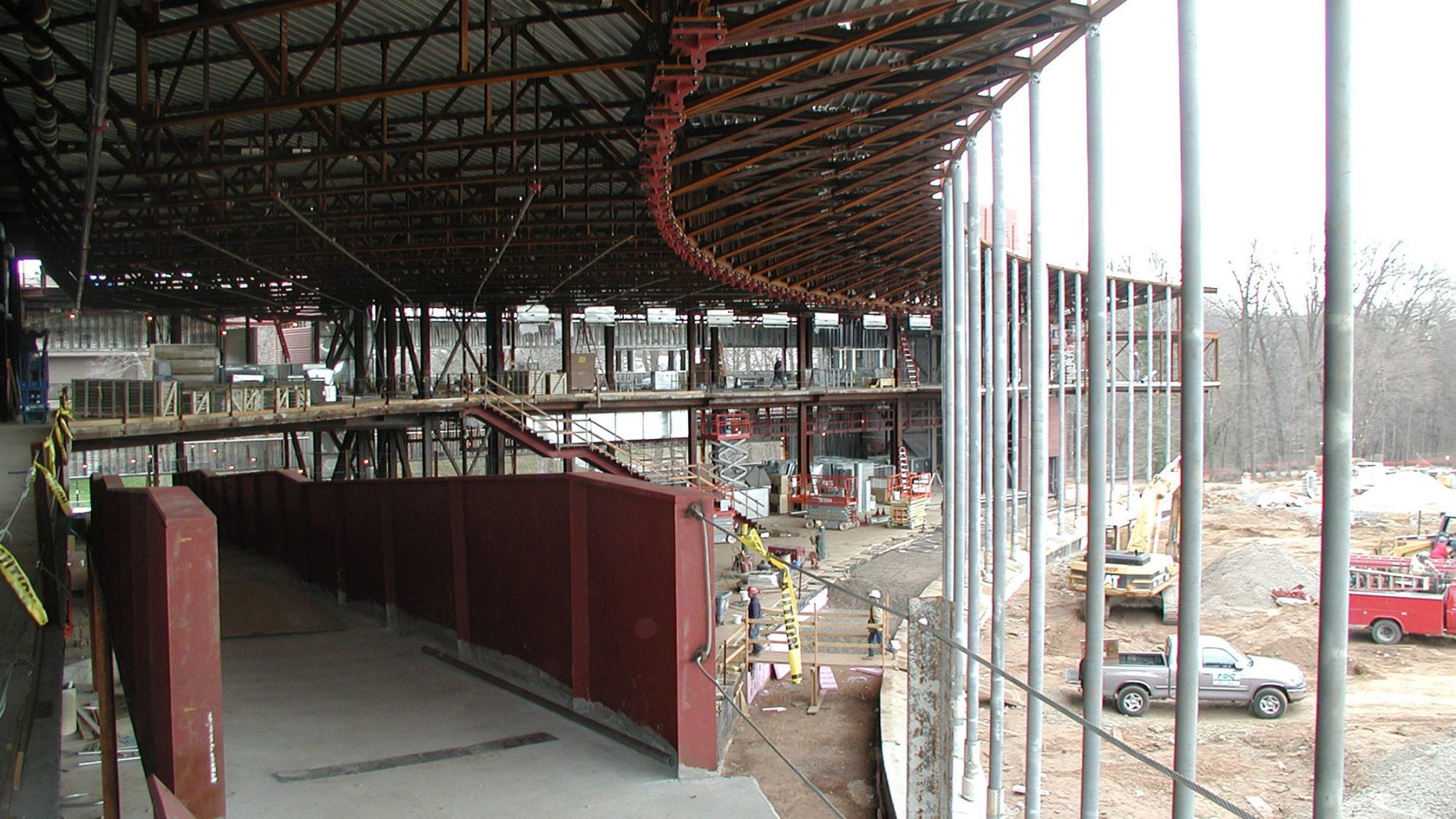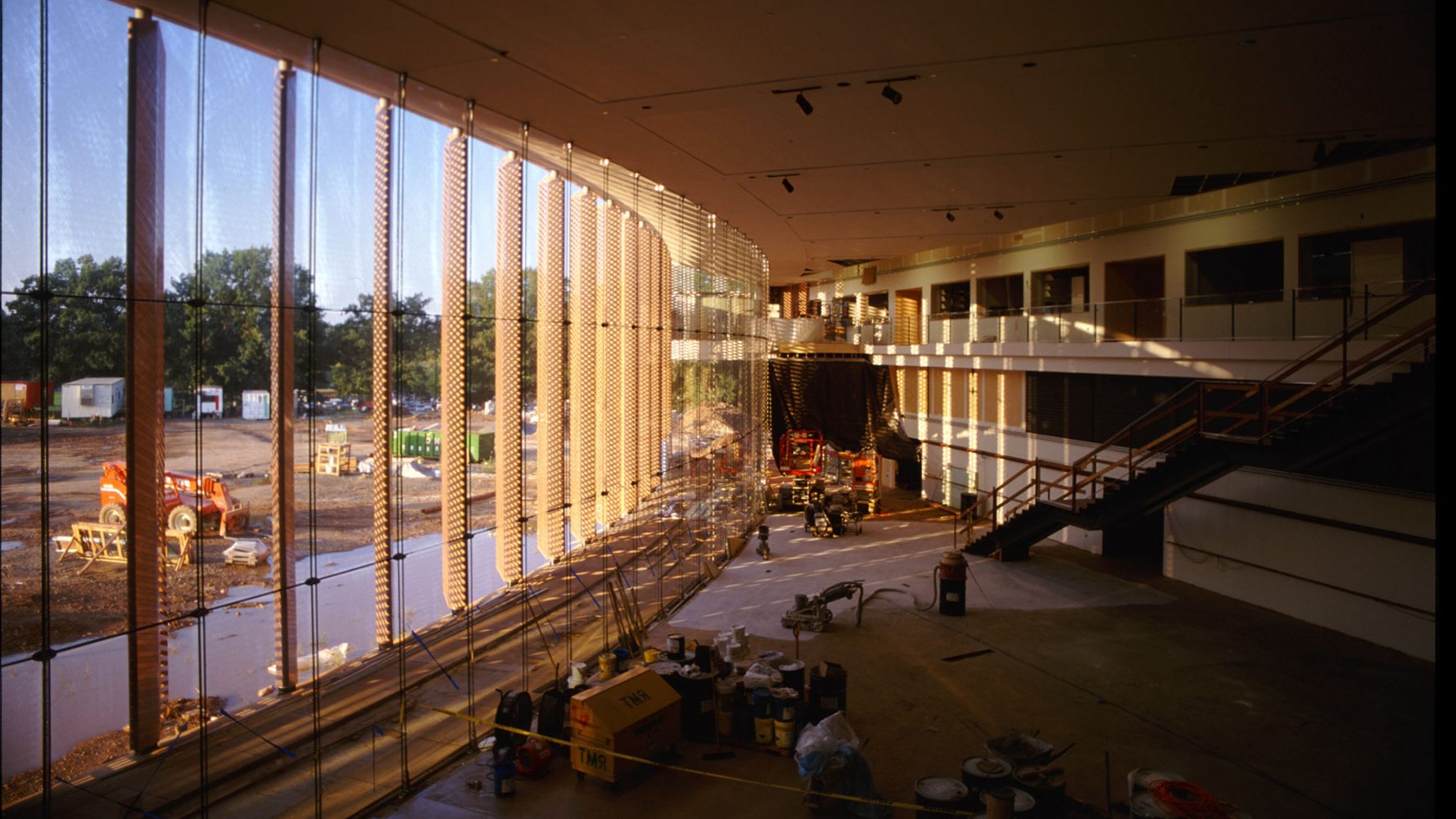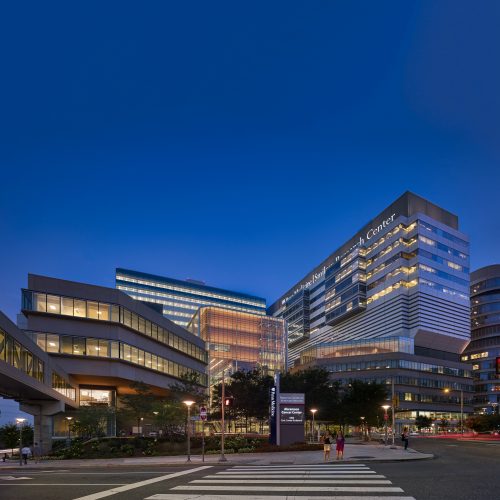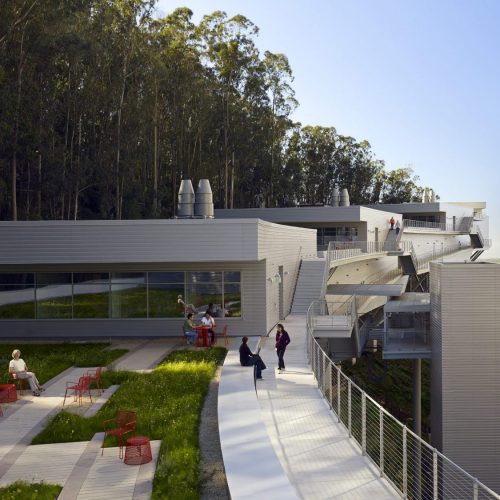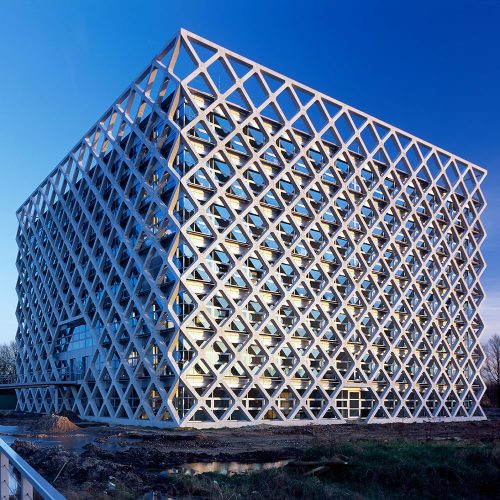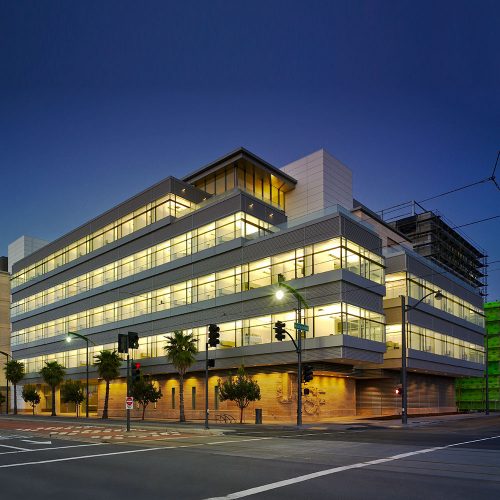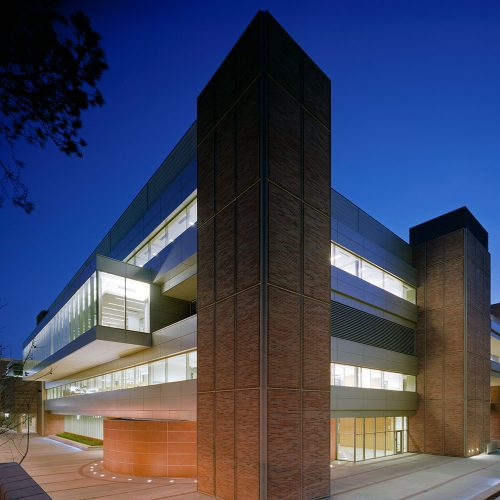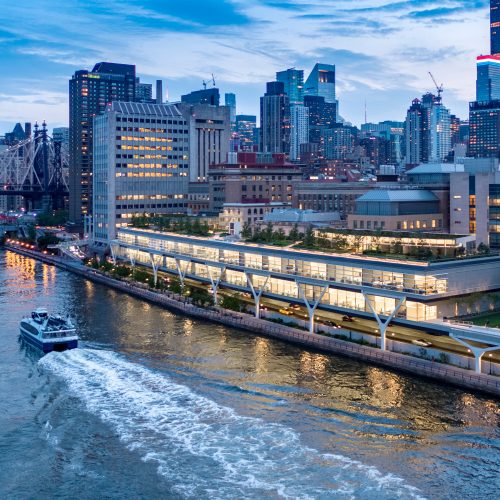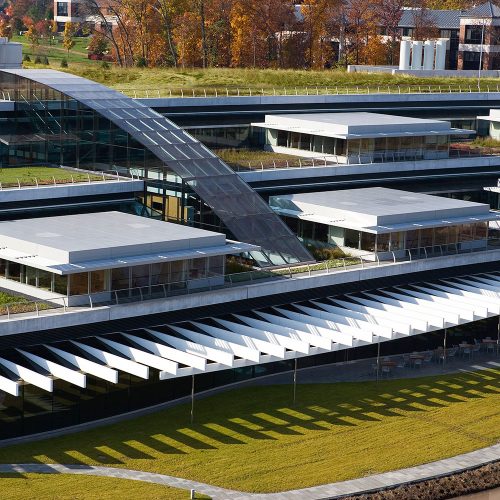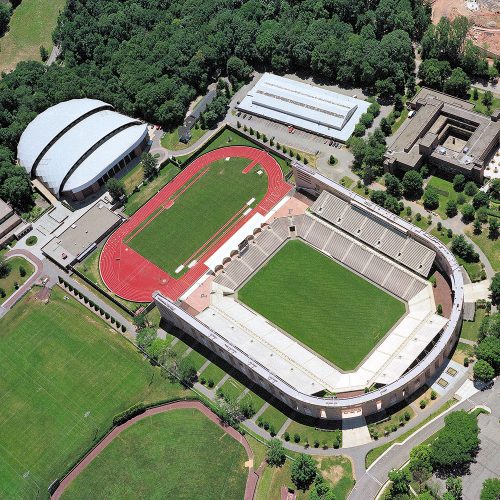Princeton University, Carl Icahn Laboratory, Lewis-Sigler Institute for Integrative Genomics
Among the first fully integrated labs in America, the building was designed around a large central atrium that unites researchers from a wide variety of disciplines and encourages a free exchange of ideas.
The mission of the Lewis-Sigler Institute for Integrative Genomics is to conduct pioneering research into fundamental questions of biology by integrating perspectives and analytical tools of molecular biology, chemistry, physics and computer analysis. To help achieve these goals, the Carl Icahn Laboratory, among the first fully integrated labs in America, was designed to unite researchers from a variety of disciplines and encourage a free exchange of thoughts and findings.
The facility accomplishes this with a large central atrium at the heart of the building, a social place where researchers and students can meet in formal and informal conference areas, sparking the impromptu discussions that lead to collaboration and new research paths. The atrium looks onto a large, ellipse-shaped campus green through a curved, two-story glass curtain wall that introduces natural light deep into the center of the building. In order to minimize thermal loading on the mechanical systems, a series of 31 12-meter-tall, computer-controlled aluminum louvers track the movement of the sun to provide optimal shading to the south-facing curtain wall at all times, creating a dynamic interplay of light and shadow in the atrium throughout the day.
The “loft-like” laboratories are arranged along the north and eastern elevations of the building. With open floor plans, modular partitions, 3.7-meter-high ceilings, interstitial mechanical stories, and demountable casework and lab benches, the laboratories are designed for maximum flexibility over time as research needs change to keep up with the pace of genomic science. Clerestory windows supplement the windows at the level of the work surfaces, directing light deep into the space.
With a significant outdoor pedestrian route passing between the louvers and curtain wall, and with a pre-cast enclosure system designed to complement (or reflect) the brick-clad architecture of the university’s science facilities and its more traditional stone structures, the new building is seamlessly integrated into the campus, creating a prominent home to promote the institute and to inspire scientific inquiry.


